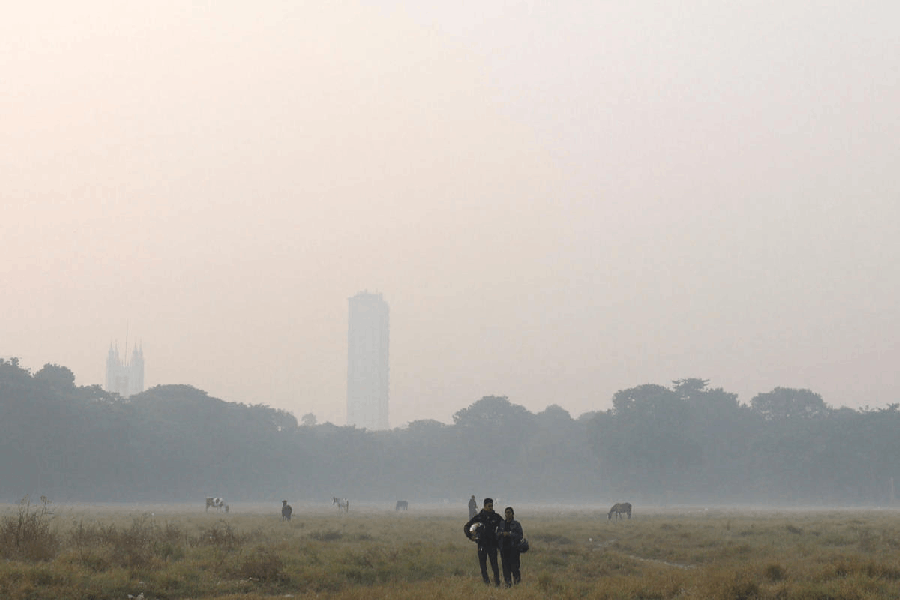The steady rise in tiger numbers is one of India’s greatest global achievements, but the conservation of the apex predator is still fraught with challenges, two veteran foresters said.
A balance between infrastructure development and preserving the sanctity of tiger corridors and tourism that respects the forest is vital to ensure that the big cats thrive, they said.
At a packed auditorium of Tollygunge Club on an overcast Tuesday evening, Pradeep Vyas and Sunil Limaye, former principal chief conservators of forests in Bengal and Maharashtra, discussed India’s tigers.
Dhriti Banerjee, director of the Zoological Survey of India, and Shiladitya Chaudhury, wildlife photographer, were also part of the panel.
From 1,411 in 2006, India recorded 3,682 tigers in the wild in 2022. It accounts for more than 70 per cent of the global count. This has been made possible largely because of a sustained conservation effort that has worked with people living in the forest fringes.
India’s tiger numbers kept rising while the animal became functionally extinct in countries like Laos, Cambodia and Vietnam.
On Tuesday, Banerjee, who heads India’s oldest taxonomic organisation, asked about the main challenges in tiger conservation.
Vyas said the significant rise in the tiger population meant more big cats trying to fit in the same forests.
“Tigers are extremely territorial. The young adults face stiff competition from the full-grown, mature tigers. Driven out of their original home, they often venture out to find a new home. They move through the corridors. Expansion of linear infrastructure — like roads, flyovers, railways, and power lines — often puts pressure on these corridors. A balanced approach must be worked out,” said Vyas.
Unplanned infrastructure expansion can create fragmented tiger habitats, forcing the big cats to cross over to human-dominated landscapes, leading to an increase in man-wildlife conflicts. “Fragmented habitats can lead to isolated populations, potentially reducing genetic diversity,” he said.
Look beyond tigers
Limaye said tiger tourism had helped put the spotlight on the big cat, but visitors must enjoy forests in their totality.
“Many tourists are so obsessed with seeing the tiger that they don’t care about any other animal,” he said.
Limaye cited examples from Tadoba Andhari National Park, renowned for its higher tiger sighting rates. “A tourist group saw sambars, wild dogs and gaurs. But they seemed to be of no value. People visiting the forest must understand that while tigers are important, so are other species.”
He batted for sustainable and responsible tourism. “The best form of wildlife tourism is sustainable tourism. The visitors must acknowledge and respect the sacrifices made by the local population for conservation,” he said.
Avni Chaudhury asked Limaye about Avni, or tigress T1, who reportedly killed 13 people in Maharashtra. She was finally gunned down in the forests of Yavatmal in November 2018. Limaye was then Maharashtra’s additional principal chief conservator of forests.
“We tried our best to capture her. A dart was fired, and it hit her. The team thought the tigress would run away. But she did not and turned back at the team, as if about to charge. That is when the hunter fired a shot,” said Limaye.
Avani had two cubs, a male and a female. While the male could not be traced, the department managed to trace the female and took her to a shelter in Nagpur’s Pench. “The cub was kept there for more than seven months. It was a soft cage. She learnt to hunt deer. But unfortunately, on the very day she was released into the wild, she was mauled in a fight with a bigger tigress. She came back to the shelter but succumbed to the severe injuries,” Limaye said.











